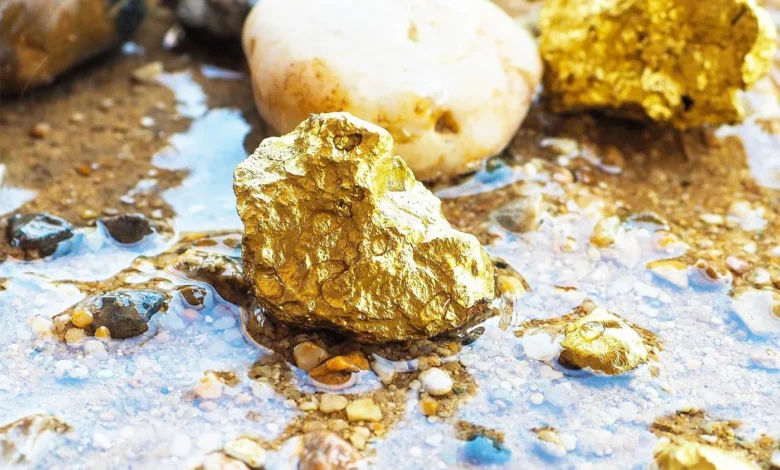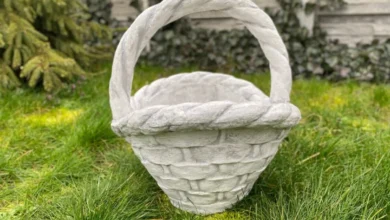Maria Geralda High-Grade Gold Deposit: Brazil’s Hidden Mineral Treasure

The Maria Geralda High-Grade Gold Deposit is one of Brazil’s lesser-known yet geologically significant gold assets. Located within the renowned Minas Gerais mineral belt, this deposit represents a promising exploration target with the potential for world-class gold production. With its high ore grades, favorable geological setting, and expanding exploration interest, Maria Geralda is fast becoming a focus point for investors and geologists alike.
1. Overview of the Maria Geralda Gold Deposit
The Maria Geralda Gold Deposit is situated in the Minas Gerais State of Brazil, an area globally recognized for its historic and modern gold mining activities.
The region hosts several prolific gold systems, and Maria Geralda stands out due to:
-
High-grade mineralization zones confirmed through core drilling.
-
Proximity to infrastructure — roads, water, and skilled labor.
-
Favorable host rocks typical of Brazil’s greenstone belts.
Preliminary studies suggest that the deposit holds multiple gold-bearing veins, primarily within quartz-carbonate shear zones, indicating a structurally controlled hydrothermal origin. Such systems are similar to those found in other major deposits like Crixás and Jacobina.
2. Geological Characteristics and Formation
The geology of Maria Geralda is a textbook example of Archean greenstone-hosted gold deposits. These deposits are typically formed through hydrothermal fluid activity during tectonic deformation and metamorphism.
Key Geological Features:
-
Host Rocks: Banded iron formations (BIFs), metavolcanics, and metasedimentary units.
-
Ore Minerals: Native gold, pyrite, chalcopyrite, and minor sphalerite.
-
Alteration Patterns: Strong silicification, sericitization, and carbonate alteration.
-
Gold Association: Closely tied to sulfide mineralization along sheared quartz veins.
The gold grades identified in drill cores are considered high-grade, with some samples showing values exceeding 10 grams per tonne (g/t)—placing Maria Geralda among Brazil’s richer exploration zones.
Geological mapping indicates the system may extend several kilometers along strike, suggesting potential for large-scale resource expansion with continued exploration.
3. Exploration and Development Activities
Exploration at Maria Geralda has been carried out by junior mining companies and geological research institutions aiming to define the deposit’s extent and economic potential.
Typical exploration work has included:
-
Surface sampling and geochemical soil surveys.
-
Diamond drilling programs to confirm subsurface continuity.
-
Geophysical mapping using induced polarization (IP) and magnetic surveys.
-
3D modeling to outline the mineralized zones.
Early drilling results have shown consistent high-grade intersections, with visible gold observed in several core samples. The project is currently in the advanced exploration phase, where companies focus on expanding known resources and performing feasibility studies for potential open-pit or underground mining operations.
The combination of grade continuity, geological similarity to major deposits, and low exploration risk makes Maria Geralda an attractive asset for both domestic and international investors.
4. Economic Importance of the Maria Geralda High-Grade Deposit
The discovery and development of Maria Geralda hold substantial economic potential for Brazil’s mining sector. Minas Gerais has long been a cornerstone of Brazil’s mineral economy, producing not only gold but also iron ore, bauxite, and lithium.
Economic Highlights:
-
High-grade ore means lower extraction costs and higher profitability.
-
Accessible location reduces infrastructure and logistics expenses.
-
Skilled regional workforce supports efficient project scaling.
-
Potential for joint ventures with established mining companies.
With the global price of gold hovering above $2,000 per ounce, high-grade discoveries like Maria Geralda can play a key role in boosting Brazil’s gold export revenues.
Furthermore, local economies stand to benefit through job creation, technology transfer, and infrastructure development once full-scale mining operations begin.
5. Environmental and Sustainability Considerations
Modern gold mining requires balancing economic goals with environmental responsibility, and Maria Geralda is no exception. Exploration companies have expressed commitment to following Brazil’s stringent environmental protection frameworks, focusing on sustainable resource extraction.
Sustainability Measures Include:
-
Minimizing land disturbance through targeted drilling.
-
Using recycled water systems to reduce consumption.
-
Implementing revegetation programs after exploration phases.
-
Conducting community consultations to maintain transparency.
By aligning with global ESG (Environmental, Social, and Governance) standards, the Maria Geralda project aims to ensure that gold production contributes positively to local communities while protecting the natural environment.
6. Future Outlook for the Maria Geralda High-Grade Gold Project
The future of the Maria Geralda High-Grade Gold Deposit looks promising. Ongoing exploration and favorable preliminary results indicate that the deposit could evolve into one of Brazil’s next-generation gold mines.
Future milestones include:
-
Completion of resource estimation reports (NI 43-101 or JORC standards).
-
Further drilling programs to delineate ore bodies at depth.
-
Metallurgical testing to optimize recovery processes.
-
Partnerships or acquisitions by major gold producers.
If exploration success continues, Maria Geralda may soon join the ranks of Brazil’s iconic gold assets — alongside Paracatu, Cuiabá, and Morro Velho — strengthening the country’s position as a global gold powerhouse.
Conclusion
The Maria Geralda High-Grade Gold Deposit is more than just a promising exploration site — it represents the next wave of Brazilian mineral wealth emerging from the rich geology of Minas Gerais. With high ore grades, geological continuity, and responsible exploration practices, the project could soon contribute significantly to both regional development and global gold supply.
As the demand for gold remains strong worldwide, the continued success of Maria Geralda could reinforce Brazil’s reputation as a leader in sustainable and profitable mineral exploration.
FAQs
1. Where is the Maria Geralda Gold Deposit located?
It is located in Minas Gerais State, Brazil, within the historic gold belt region.
2. What makes it a high-grade deposit?
Its gold grades exceed 10 g/t in several drill samples, placing it among high-grade global deposits.
3. Who is exploring the Maria Geralda site?
The site has been under exploration by Brazilian junior mining firms and international geological partners.
4. What type of gold mineralization does it have?
It features quartz-sulfide vein systems within greenstone belt formations, typical of Archean-aged deposits.
5. Is the project environmentally sustainable?
Yes. Exploration companies are adopting eco-friendly practices, community engagement, and ESG compliance to ensure sustainability.




